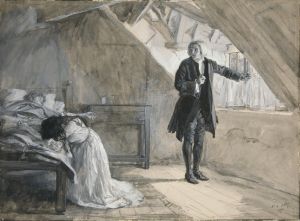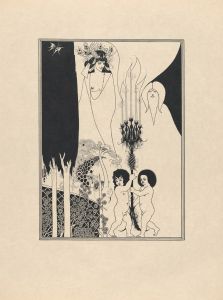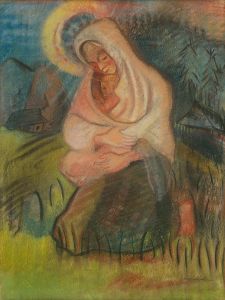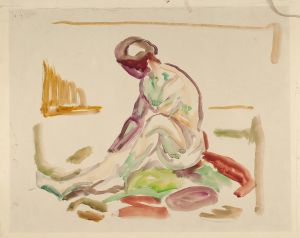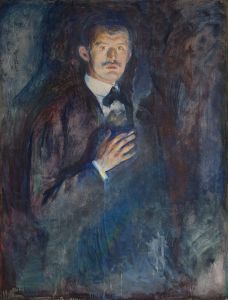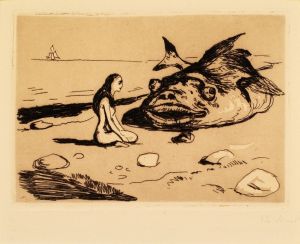
Salome
A hand-painted replica of Edvard Munch’s masterpiece Salome, meticulously crafted by professional artists to capture the true essence of the original. Each piece is created with museum-quality canvas and rare mineral pigments, carefully painted by experienced artists with delicate brushstrokes and rich, layered colors to perfectly recreate the texture of the original artwork. Unlike machine-printed reproductions, this hand-painted version brings the painting to life, infused with the artist’s emotions and skill in every stroke. Whether for personal collection or home decoration, it instantly elevates the artistic atmosphere of any space.
Edvard Munch, a Norwegian painter and printmaker, is renowned for his evocative and emotional works that often explore themes of existentialism, love, and death. Among his extensive oeuvre, the painting "Salome" stands out as a significant piece that reflects Munch's fascination with psychological and emotional depth.
"Salome" was created during a period when Munch was deeply influenced by Symbolism, a movement that sought to express the meaning behind the physical world and explore the realms of imagination and emotion. This painting, like many of Munch's works, delves into the complexities of human emotion and the darker aspects of the psyche.
The subject of the painting, Salome, is a biblical figure who has been depicted in various art forms throughout history. She is often associated with the story of the beheading of John the Baptist, where she is portrayed as a femme fatale who demands the head of the prophet as a reward for her dance. This narrative has been a source of inspiration for many artists, and Munch's interpretation adds a unique psychological dimension to the tale.
In Munch's "Salome," the artist captures the intensity and drama of the moment with his characteristic use of color and form. The painting is marked by bold, swirling lines and a vivid palette that convey a sense of movement and emotion. Munch's use of color is particularly striking, with deep reds and dark tones that evoke a sense of passion and foreboding. This choice of color not only highlights the dramatic nature of the story but also reflects Munch's interest in exploring the emotional and psychological states of his subjects.
The composition of "Salome" is dynamic, with the figure of Salome often depicted in a way that emphasizes her power and allure. Munch's portrayal of Salome is not merely a literal representation of the biblical story but rather an exploration of the themes of desire, manipulation, and the consequences of unchecked passion. This aligns with Munch's broader artistic goals of delving into the human condition and the complexities of interpersonal relationships.
Munch's "Salome" is also notable for its connection to the broader cultural and artistic trends of the time. The late 19th and early 20th centuries saw a resurgence of interest in mythological and biblical themes, often reinterpreted through the lens of modern psychology and symbolism. Munch's work fits within this context, as he sought to capture the essence of human emotion and the subconscious mind.
While "Salome" may not be as widely recognized as some of Munch's other works, such as "The Scream," it remains an important piece within his body of work. It exemplifies his skill in using art to explore complex emotional and psychological themes, and it reflects his ongoing interest in the darker aspects of human nature.
In summary, Edvard Munch's "Salome" is a compelling exploration of the themes of desire and power, rendered with the artist's distinctive style and emotional depth. Through his use of color, form, and symbolism, Munch creates a work that resonates with the viewer on both an aesthetic and psychological level, making it a significant contribution to the world of art.





